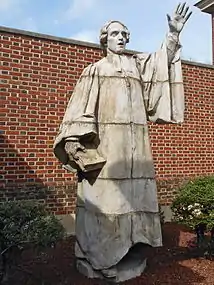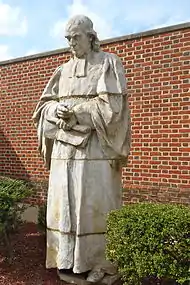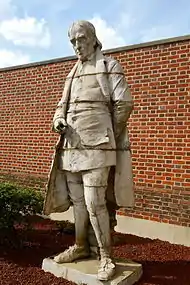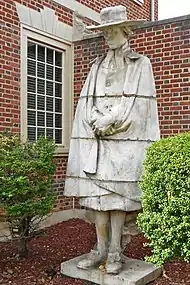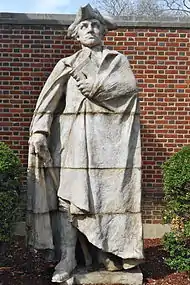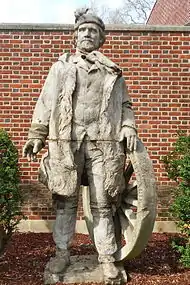Witherspoon Building | |
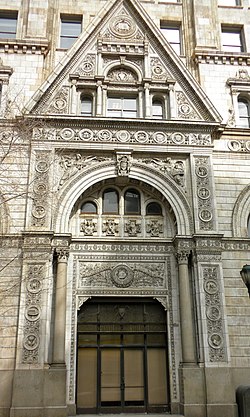 Witherspoon Building entrance, February 2010 | |
   | |
| Location | 1321 Walnut Street, Philadelphia, Pennsylvania |
|---|---|
| Coordinates | 39°56′58″N 75°9′48″W / 39.94944°N 75.16333°W |
| Area | 0.3 acres (0.12 ha) |
| Built | 1896 |
| Architect | Huston, Joseph; Et al. |
| Architectural style | Skyscraper |
| NRHP reference No. | 78002462[1] |
| Added to NRHP | September 18, 1978 |
Witherspoon Building is a historic office building located in the Market East neighborhood of Philadelphia, Pennsylvania. It was designed by architect Joseph M. Huston (1866–1940) and built in 1896. It was built for the Presbyterian Board of Publications and Sabbath School Work. It is an 11-story, steel frame E-shaped building, faced with brick and granite. It has terra cotta decorative elements. Its exterior features Corinthian order and Ionic order columns, statues, medallions, seals of various boards and agencies of the Presbyterian Church and of related Reformed churches. It is named for John Witherspoon (1723–1794), a president of Princeton University.[2]
It was added to the National Register of Historic Places in 1978.[1]
Sculpture
Several statues and some of the medallions were designed by sculptor Alexander Stirling Calder (1870–1945), including statues of six historically prominent Presbyterians, Francis Makemie, John Witherspoon, John McMillan, Samuel Davies, James Caldwell and Marcus Whitman. These sculptures were removed in 1961 and later moved to the courtyard of the Presbyterian Historical Society in Philadelphia.[2][3]
References
- 1 2 "National Register Information System". National Register of Historic Places. National Park Service. July 9, 2010.
- 1 2 "National Historic Landmarks & National Register of Historic Places in Pennsylvania". CRGIS: Cultural Resources Geographic Information System. Archived from the original (Searchable database) on 2007-07-21. Retrieved 2012-06-17. Note: This includes Richard J. Webster (July 1977). "National Register of Historic Places Inventory Nomination Form: Witherspoon Building" (PDF). Retrieved 2012-06-16.
- ↑ "Witherspoon Building Figures". SIRIS. Smithsonian Institution. Retrieved April 10, 2014.
